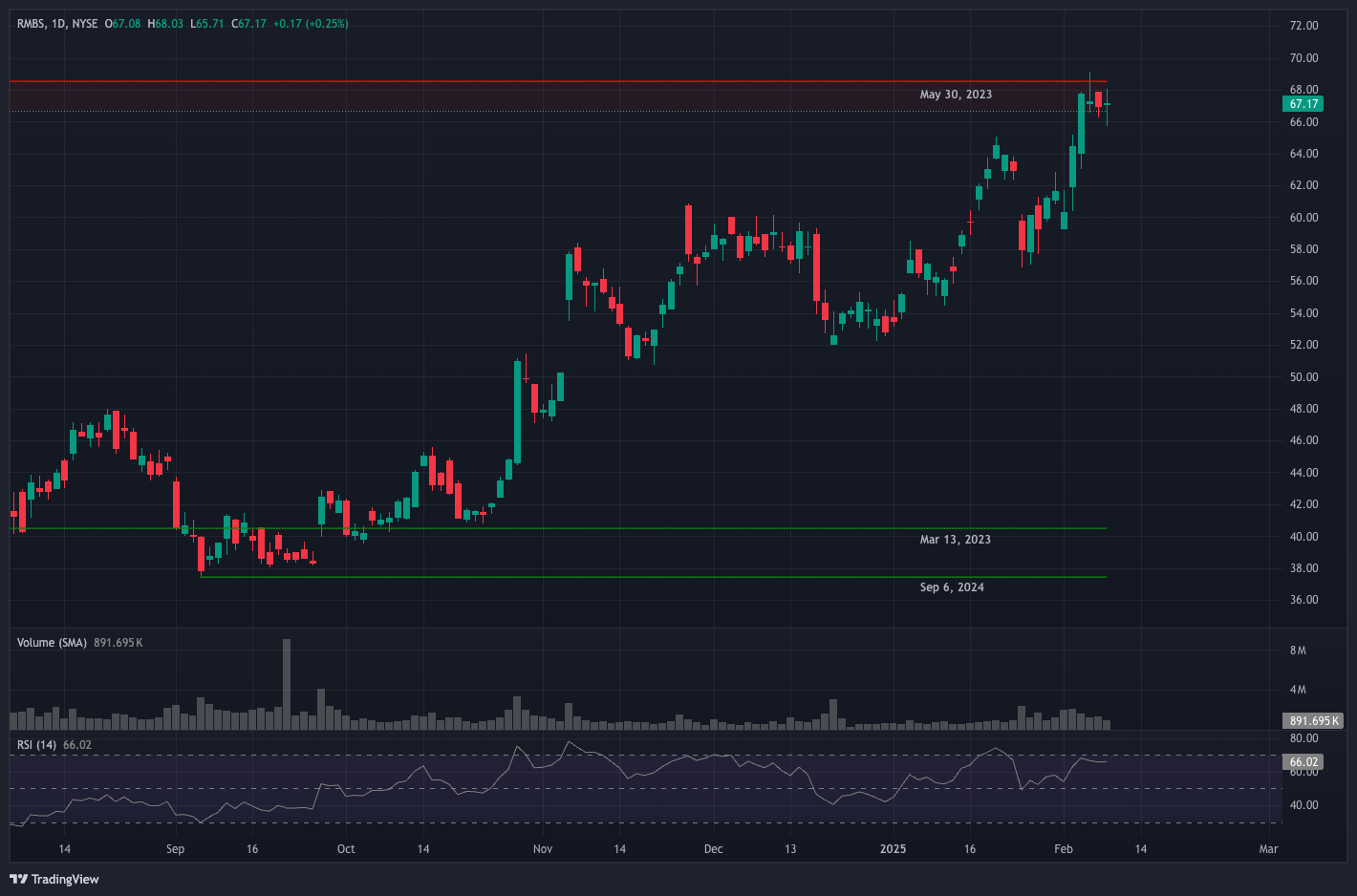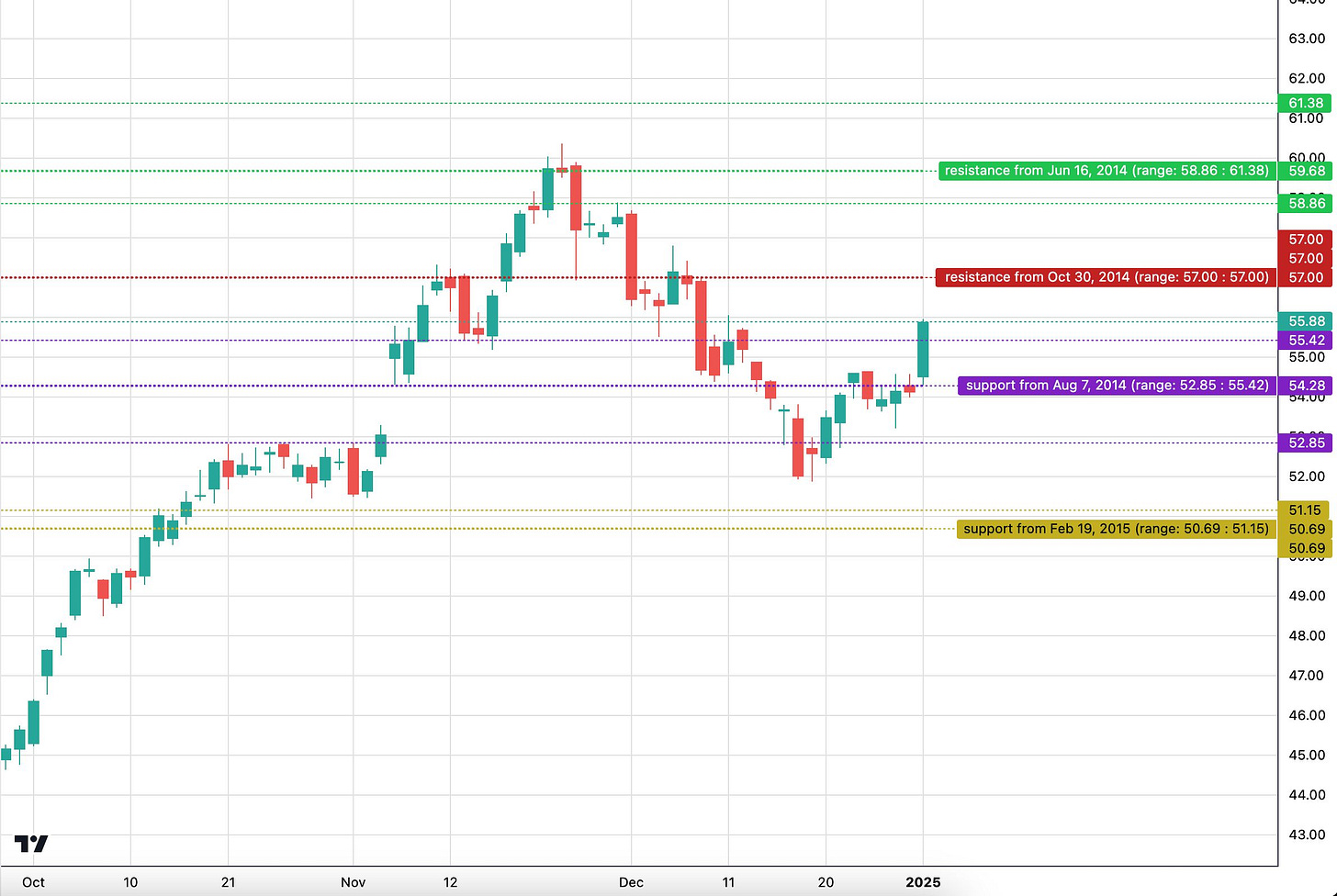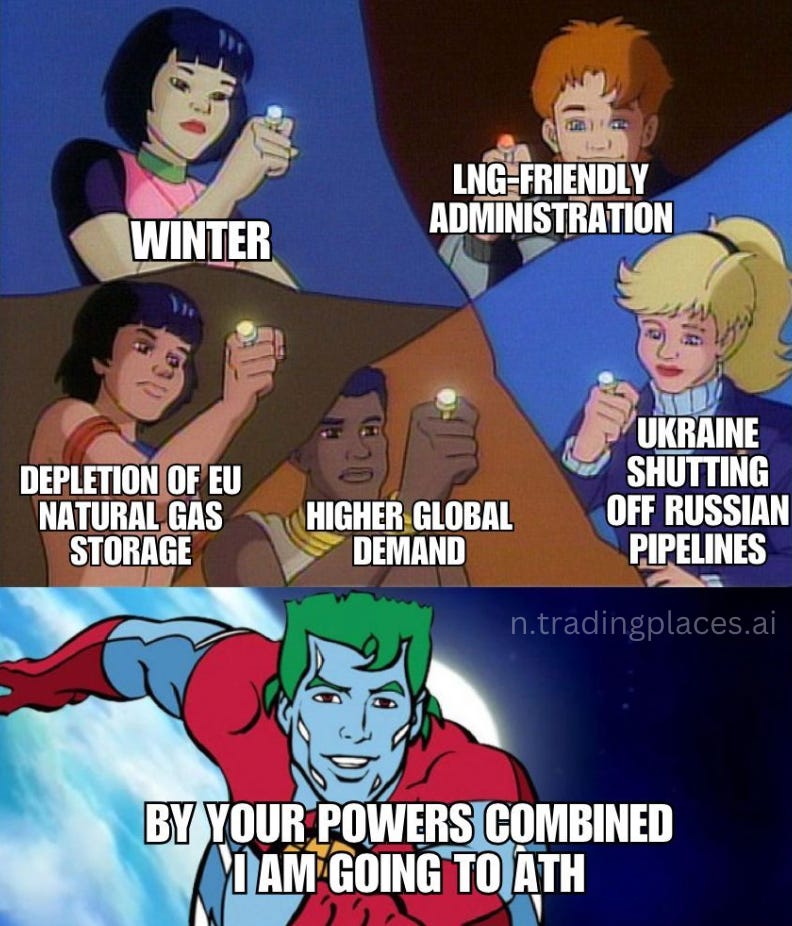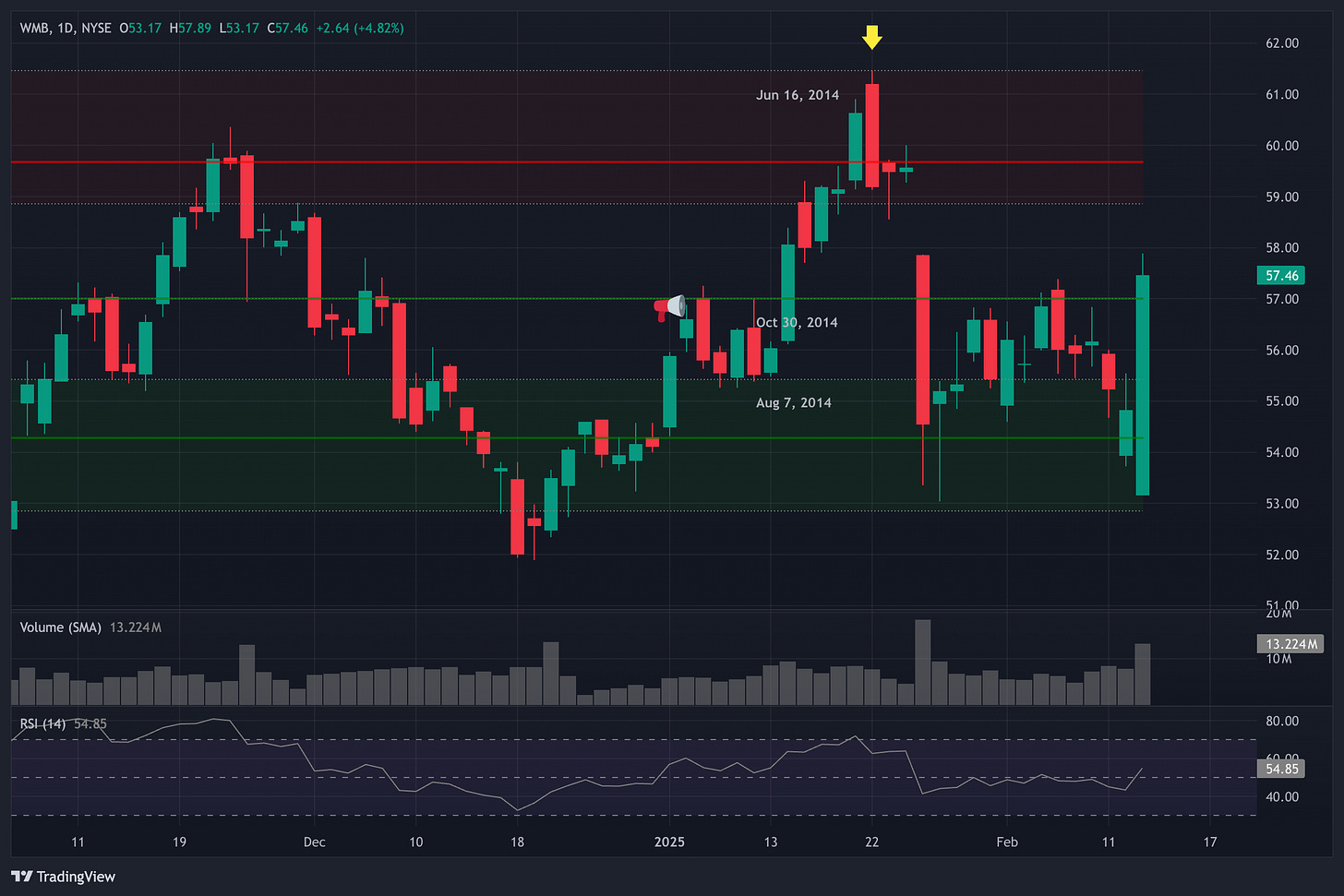Recapping past zones (14 Feb 2025)
A follow-up to our weekly zone alerts
Hi again, folks.
Welcome to this week’s installment of our Zone Updates—a weekly series where we break down past alerts to see how price action unfolded as stocks approached key zones.
This week, we’re gonna be covering a couple of alerts from just this past Tuesday, and following up on a very old one from early January—because, well… so many alerts, so little time.
In case you’re new here, each week we highlight stocks nearing or entering Hot Zones, i.e. key levels on the charts with great risk-reward setups. Stay tuned and subscribe to get these alerts before anyone else!
Check out this week’s hot zones:
Rambus Inc. (RMBS)
Technology • Semiconductors • USA • NASD
Zone alert: February 11, 2025
Urgency was key for our RMBS alert early Tuesday morning.
This was one of those setups where the value lied not in which zone the stock had entered, but simply in the fact that it had entered a zone.
Because while RMBS’ May 2023 zone wasn’t the strongest, everything else was screaming that a move was coming. (And in our estimate, that move was likely going to be a bounce down.)
And, well, bounce it did. Immediately.
The stock is already down 6.8% since the alert, and it could potentially continue this slide should the support around $62 break.
Virtu Financial Inc. (VIRT)
Financial • Capital Markets • USA • NASD
Zone alert: February 11, 2025
In our last newsletter, we did a whole (probably unnecessary) bit on why volatility helped push VIRT’s stock price up 30+%, despite a surprising seven-month-long bearish divergence…
All to come to the conclusion that we think a drop is likely.
Despite VIRT’s strong uptrend and brewing market uncertainty, its penetration of the April 2018 zone signaled to us that a move down to the February 2018 support could be in the works.
With the break confirmed, VIRT has been sliding ever since. Still early days, but the stock is already down by about 4%.
The Williams Companies, Inc. (WMB)
Energy • Oil & Gas Midstream • USA • NYSE
Zone alert: January 3, 2025
WMB was one of the bonus zones we posted on X (@tradingplacesai). Shameless plug: we also drop zone alerts in our Substack Chat, so join us there too!
Anyway, WMB caught our eye at the start of the year as it broke out of its August 2014 zone.
We thought that—with the strength of its bounce off support just days before, and with the pro-LNG stars seemingly coming into alignment—the stock could make an attempt at a new all-time high.
Guess what? It did… kind of… for a few moments.
WMB went up to as much as $61.46 on January 22, before bumping up against the top of the June 2014 zone and tumbling back down.
If you were watching this play, this was also the best time to exit your position, locking in a ~10% profit before the reversal.
Even this week, our zone algorithm has spotted three additional opportunities with compelling risk-reward potential.
To get these delivered straight to your inbox weekly, subscribe to our newsletter. A new zone alert is dropping this Tuesday!
“But wait… who are you people and what am I doing here?”
Welcome to Trading Places.
We’re just a bunch of market nerds, quants, and posers who’ve stared at enough charts we dump our portfolios at the sight of a menorah.
After years of convincing ourselves that the lines and shapes we were plotting actually meant something, we finally figured it was time to upgrade our shtick a tiny bit.
So now, we get quant intelligence to do it for us.
We built an algorithm that’s deaf to the market’s siren songs. It cuts through the BS and pinpoints Zones of interest, i.e. places on the chart where actual money comes to dance.
Think of it as a Limitless pill for your stock, currency, and crypto plays—scanning the markets in real-time and determining where the action’s at.
WTF are Zones, anyway?
Zones are key price levels where the market has reacted strongly in the past—such as sharp reversals or sudden swings.
They’re areas where actual supply and demand met in the past, and likely will meet again.
“Why are these significant?”
Well, it all comes down to three key principles. We like to call them The Principles of:
When I Dip, You Dip, We Dip (aka psychology)
Traders are aware that others are watching these levels (zones) too. With everybody paying attention, this creates a self-fulfilling prophecy where everybody acts in anticipation of everybody else’s actions.
Markets Gonna Market ¯\_(ツ)_/¯ (aka technical factors)
If the first price rejection at the top of a zone was violent, it’s likely that buyers who entered at that level are now holding losses.
But with each retest, the rejection weakens, as there are fewer buyers remaining underwater. This weakens that resistance (or support for all you short-sellers), and could eventually lead to a break through.
Killer Whales (aka institutional plays)
Big players need liquidity in order to place massive orders without moving the market against themselves. So they wait for these zones, knowing a lot of us small fry (retail traders) will come to play.
This allows them to buy low or sell high without causing a lot of waves.
Remember: Zones are NOT guarantees but rather regions of increased probability for market moves. So always, ALWAYS use proper risk management.
Trading Places: Launch coming soon!
Stop obsessively refreshing your charts like it’s your ex’s Instagram.
By combining historical patterns with real-time market data, Trading Places identifies zones and assigns probabilities to each one—helping traders spot potential plays with higher chances of success.
It automates all of the curation, chart-plotting, and alerting for you, so you can actually have a life (or at least pretend to)!
Stay tuned!
Disclaimer: This isn't financial advice. This shouldn’t be news to you.









